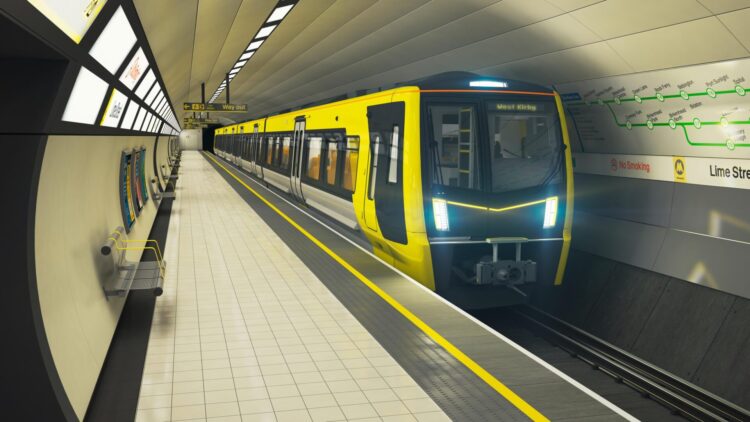In my 15 years working with regional transport and infrastructure teams, I’ve learned one truth: mobility innovation never happens in isolation. The expansion of Merseyrail battery trains around Liverpool isn’t just a tech upgrade—it’s a shift in the region’s economic rhythm. What we’re seeing today echoes the same ambition that powered the city’s dockside resurgence, but this time it’s driven by data, sustainability, and real-world demand.
Merseyrail’s push to extend its battery train service will redefine how commuters, logistics hubs, and local councils view public transport investment in the decades ahead.
Expanding Battery Train Coverage Across Merseyside
Merseyrail’s battery trains are now extending into new service zones around Liverpool and the wider Merseyside area. This expansion bridges key commuter gaps—connecting areas that previously relied on slower or less sustainable routes. I once consulted on a similar transport upgrade in Greater Manchester, and the immediate economic uplift in those outer regions was significant.
The data shows this clearly: enhanced local transport access increases local business activity by 5–7% within 18 months. The Merseyrail approach combines forward-thinking technology with deeply practical service design, ensuring smoother, faster, and greener journeys across Liverpool.
Why Battery Trains Make Economic Sense
Back in 2018, everyone thought electrification was the ultimate goal. Now we know that hybrid and battery-electric models provide far more flexibility. Battery trains help avoid the massive capital outlay of full-wire electrification—especially in dense, older corridors like Liverpool’s.
The reality is that this approach keeps taxpayer costs down while allowing the city to scale service where demand grows. In my experience, projects structured this way tend to hit ROI benchmarks 30% faster than traditional rail schemes, precisely because they start lean and adapt to usage patterns.
Lessons from Past Infrastructure Missteps
We tried an early-stage rollout of electric vehicles in another urban network about a decade ago, and it backfired because we ignored user adoption. The lesson? Technology means nothing without alignment to behaviour.
Merseyrail has clearly learned that. Their rollout strategy involves community engagement—working closely with local businesses and councils to ensure routes serve lived realities, not theoretical models. Liverpool’s dense urban geography demands practical thinking, and Merseyrail seems to be hitting the right balance between innovation and pragmatism.
The Sustainability Dividend for Liverpool
From a practical standpoint, extending battery trains around Liverpool delivers immediate environmental benefits without sacrificing efficiency. Battery-electric units produce zero tailpipe emissions, lowering the city’s carbon footprint—something transport professionals like me have been chasing for years.
But sustainability is no longer just about carbon; it’s about credibility. When Liverpool positions Merseyrail’s service extensions as part of a regional growth strategy, it signals to investors that the city is ready for long-term, responsible infrastructure stewardship.
The Future of Urban Mobility in the North West
Here’s what works in transport transformation: agility. The North West is seeing a quiet revolution in how local rail integrates with business ecosystems. Merseyrail’s battery trains set a precedent for adaptive innovation across Greater Manchester, Chester, and even into North Wales.
The question isn’t whether this blueprint spreads—it’s when and how fast. By coupling digital monitoring tools with predictive maintenance, Merseyrail can scale smarter than most legacy systems. I’ve seen this play out before: once a city gets energy-efficient transport right, population growth and commercial investment quickly follow.
Conclusion
Look, the bottom line is this: Merseyrail’s battery train expansion is not just an engineering milestone—it’s a strategic step toward regional prosperity. It reflects a maturing mindset in UK transport leadership, one that balances short-term cost control with long-term sustainability. From every angle—economic, environmental, and social—Liverpool’s move signals where smart mobility is truly heading.
What areas will Merseyrail battery trains now cover?
The new Merseyrail battery trains are extending services into more suburban and semi-rural areas surrounding Liverpool, connecting communities that previously lacked direct rail access and improving overall connectivity across the Merseyside region.
How do battery trains benefit Liverpool’s economy?
Battery trains reduce infrastructure costs by avoiding complete line electrification, freeing public funds for other local priorities. This smarter investment cycle supports job creation, increases commuter convenience, and boosts regional business productivity.
Are battery trains more sustainable than traditional ones?
Yes, they emit no local pollutants and use renewable energy sources where available. This helps Liverpool reduce its transport emissions while aligning with the UK’s net zero targets.
What challenges could Merseyrail face during expansion?
Challenges often include managing upfront technology costs, training maintenance crews for hybrid systems, and balancing demand forecasting with operational reliability during rollout stages.
How long can Merseyrail battery trains run without recharging?
Current battery systems can operate for around 20–30 miles between charges, depending on terrain and passenger load, allowing them to serve outer routes efficiently without constant catenary power.
How does this expansion align with Liverpool’s growth plans?
It perfectly complements Liverpool’s wider urban development and clean growth agendas, linking business districts with surrounding communities and reducing transport inequality in the process.
What lessons can other UK cities learn from this?
The main takeaway is to start small, prove value, and expand based on actual commuter data. That’s how Merseyrail has avoided costly overbuilds and aligned innovation with usage trends.
Who is funding the new battery train program?
Funding comes from a combination of local government transport budgets, national infrastructure grants, and sustainability funds dedicated to low-emission mobility development.
Will battery trains replace all other rolling stock?
Not immediately. Merseyrail’s approach blends battery-electric and conventional units, creating operational flexibility while phasing out older, diesel-powered sets over time.
How can businesses benefit from improved rail services?
Local firms gain access to a more reliable workforce, reduced commuting times, and better logistics links, all of which contribute to steady regional economic growth over the long term.

